RCSA Timeline
Supporting Science Since 1912


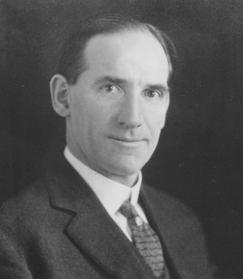
Research Corporation (RC) was founded in 1912 by Frederick Gardner Cottrell, inventor of the electrostatic precipitator. He started with $10,100 invested by the original board of directors: academics, scientists, lawyers and bankers, who provided funding for the fledgling organization, and served without compensation. The board of directors shared Cottrell’s altruistic goal of acquiring inventions...Learn more
Advancements in science are often the result of independent work by multiple investigators. This was the case with the electrostatic precipitator. The first electrostatic precipitator was invented by Sir Oliver Lodge and colleagues in 1885 for use in a lead smelter in North Wales. The installation was not successful. Both Lodge and Erwin Moeller of Germany had worked on the process, but they were unable...Learn more
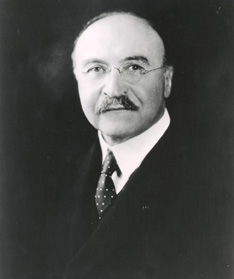
Leo Hendrik Baekeland was born in Belgium and received his doctorate in chemistry at age 21 from the University of Ghent. He taught there until 1889 and emigrated to the U.S. in 1891. He invented Velox photographic paper in 1893, a process he later sold to George Eastman for one million dollars. Baekeland is best known for his invention of an inexpensive, nonflammable plastic, known as Bakelite, in...Learn more
Charles Doolittle Walcott was Secretary of the Smithsonian Institution from 1907 until his death in 1927. He was instrumental in the founding of Research Corporation and was on the Research Corporation board from 1912 until 1927....Learn more
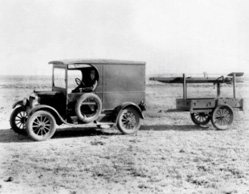
Robert H. Goddard was a professor, physicist and inventor. For his invention of the liquid-fueled rocket, he is known as the Father of modern rocketry. When first launched on March 16, 1926, Goddard’s rocket flew just 184 feet across a field, but it marked the inception of the space age. As a young man, Goddard’s interest in aerodynamics led him to study some of Samuel Langley's scientific papers...Learn more
In the 1930s, Edward Kendall, working at the Mayo Clinic in Rochester, Minnesota, isolated six hormones from adrenal glands. He named them for the order in which they were isolated: compounds A through F. Dr. Philip Hench, a rheumatologist at the Mayo Clinic, noted that one of the hormones Kendall had isolated (compound E, which became known as cortisone), when administered to rheumatoid arthritis...Learn more
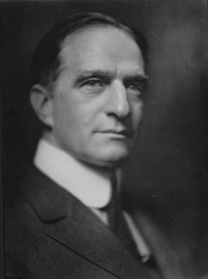
Elon Huntington Hooker was born of privilege. His ancestors included signers of the Declaration of Independence and the founder of the Connecticut Colony. Hooker received degrees in engineering from both University of Rochester and Cornell, then continued his studies at Zurich Polytechnic in Switzerland and the Ecole des Ponts et Chausees (National School of Bridges and Roads) in Paris. By age 27,...Learn more
Arthur Dehon Little was an American chemist and chemical engineer who discovered the first acetate fiber. In 1886, he founded Arthur D. Little, the first management consulting services firm. The firm pioneered the concept of contracted professional services. Its slogan in 1907 was “Other peoples’ troubles are our business.” Little was instrumental in developing chemical engineering at MIT; he...Learn more
In 1916, RC’s precipitator had produced the financial footing needed to being fulfilling Cottrell’s dream of funding scientific research. John Pine, RC’s attorney, proposed an annual research fellowship of $2,500, citing the American Academy in Rome, which gave fellowships in architecture, sculpture and painting, as his inspiration. Research Corporation would grant its first Fellowship in December...Learn more
The May 10, 1918, issue of Science announced RC’s first grantee: “Philip E. Edelman, of St. Paul, Minn., has been awarded the Research Corporation fellowship in applied science on competition by a jury consisting of the president of the National Academy of Sciences, the secretary of the Smithsonian Institution, the president of the American Chemical Society, the president of the Research Corporation...Learn more
In his biography of Cottrell, Vannevar Bush noted that at the end of World War I, Cottrell chaired a small committee of scientists and engineers assigned the task of collecting chemical and metallurgical information for the government. He left on the ship America on February 21, 1918, and landed in France on March 3. Attached to Cottrell’s passport was the statement: Frederick G. Cottrell, a...Learn more
The Perkin Medal was established in 1906 in honor of the 50th anniversary of the coal-tar color industry. It is one of the highest honors awarded in the U.S. industrial chemical industry and may be made to any chemist living in the U.S. for work he has done at any point in his career, “resulting in outstanding commercial development.” The award is named for Sir William Henry Perkin, who in 1856...Learn more
The Willard Gibbs Award was founded in 1910 by William A. Converse and named after J. Willard Gibbs, the American mathematical physicist whose work in statistical mechanics laid the basis for the development of physical chemistry as a science. The award recognizes "eminent chemists who ... have brought to the world developments that enable everyone to live more comfortably and to understand this...Learn more
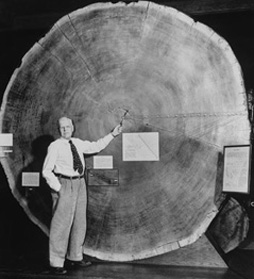
Andrew Ellicot Douglass was born in Vermont in 1867 and graduated from Trinity College in Connecticut. After graduation, he worked at the Harvard Observatory, and was chief assistant on Harvard’s 1891 Boyden expedition to Arequipa, Peru. Upon his return from Peru, Douglass met Percival Lowell in Boston. Lowell planned to build an observatory in Arizona and hired Douglass to scout the territory...Learn more
In 1920, Harvey N. Davis, a professor of physics and mechanical engineering at Harvard University, received RC’s first grant for a specific project when he was awarded $5,000 for studies in cryogenics. An article in the July-December 1920 issue of Science announced: “Research work on the manufacture of oxygen from the engineer's point of view began at the Harvard Engineering School early in the...Learn more
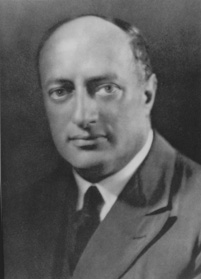
Arthur Anton Hamerschlag was an electrical and mechanical engineer, born and educated in New York City. He did field work at electric plants in Cuba, Mexico and throughout the U.S. In 1903, Andrew Carnegie hired him to direct the new Carnegie Technical Schools, where Hamerschlag led the development of programs leading to bachelor's and master's degrees. In 1912, the Carnegie Technical Schools became...Learn more
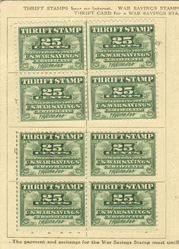
The National Thrift Bond Corporation had been formed to encourage civilians to “save wisely, not miserly, and invest in THRIFT and WAR SAVINGS STAMPS” during World War I. Agents were appointed among workers to solicit pledges to save. The amount they determined was then deducted from their paychecks. “Working Conditions, Wages and Profits,” published in 1920, noted: “Experience has taught...Learn more
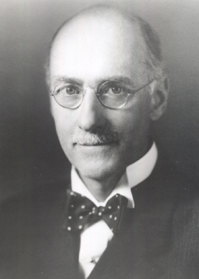
Dave Hennen Morris served on RC’s Board of Directors from 1922 until his death in 1944; beginning in 1931, he also served as treasurer. Morris was born into a wealthy New Orleans family with vast real estate holdings in Louisiana and Texas. His grandfather, Francis Morris, had made millions in the lottery and bred thoroughbreds. Dave’s father established Morris Park, a famous racetrack, in an...Learn more

Robert H. Goddard was a professor, physicist and inventor. For his invention of the liquid-fueled rocket, he is known as the Father of modern rocketry. When first launched on March 16, 1926, Goddard’s rocket flew just 184 feet across a field, but it marked the inception of the space age. As a young man, Goddard’s interest in aerodynamics led him to study some of Samuel Langley's scientific papers...Learn more
At the turn of the last century, the United States was experiencing unparalleled industrial expansion. In 1908, prominent men in the natural resources industries recognized the enormous changes the country was facing, and formed the Mining and Metallurgical Society of America (MMSA). According to the organization’s website, the mission of the group was to: conserve mineral resources; advance the...Learn more
Frederick Gardner Cottrell, the founder of Research Corporation, had a difficult time learning languages. Although he spent two years studying chemistry in Germany, Cottrell is reported to have acquired only a passing knowledge of the language. One fellow student reported that Cottrell’s German completely dispensed with the problem of assigning nouns to their proper gender by rendering them all as...Learn more
Vannevar Bush (1890-1974), an engineer and science administrator, is best known as a pioneer of the analog computer, an organizer of the Manhattan Project, and is often credited with developing the concept of the National Science Foundation. His idea of the Memex as a means of storing and accessing information was seminal in the structure of the World Wide Web. Bush was a longtime friend and advisor...Learn more
The Research Corporation Award was approved by the Board at its January 1925 meeting. The Research Corporation Award was not a grant, but was instead designed to recognize outstanding achievements in science by “one who has not undertaken the utilization of his research work for his own pecuniary benefit, whether this has been due to voluntary action on his part, to the circumstances of his employment,...Learn more
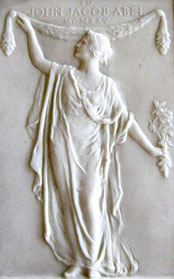
Samuel Herbert Adams was born in Vermont in 1858 and studied at MIT and the Massachusetts Normal Art School. He also studied under Antonin Mercie in Paris for five years, and then taught at Pratt Institute for eight years before becoming a sculptor full-time. He was a member of the National Academy of Design in New York and was elected its president in 1917. By the turn of the 20th century, Adams...Learn more
Research Corporation was asked to survey the sugar industry to determine possible new industrial uses for sugar. Research Corporation concluded that new uses were extremely limited, and suggested that the industry concentrate research on producing a granular yeast that could be used as cattle food....Learn more

Merle Tuve would receive the 1947 Research Corporation Award “for his scientific contributions in making possible the proximity fuze (sic) and his outstanding administration of the scientific, engineering and production groups that equipped the Armed Forces with this device.”...Learn more

Howard Andrews Poillon was descended from a noted Hugenot family that arrived in New York around 1640. Poillon was born in 1879 to parents Cornelius Poillon Jr. (of C and R Poillon, 19th-century Brooklyn shipbuilders) and Clara Louise Poillon, an artist-potter. As a young man, Poillon studied for a year at Columbia University School of Mines, then prospected in Alaska for 10 years, where he was a...Learn more
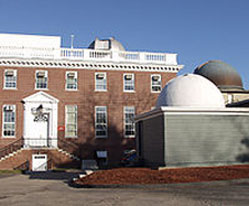
Beginning in 1929 and continuing annually until 1941, Research Corporation made grants to the Astrophysical Laboratory at the Smithsonian Institution. The lab was headed by Charles Greeley Abbot who was Secretary of the Smithsonian from 1928 until 1944. He was also a member of the Research Corporation Board of Directors from 1928 until 1947. Abbot believed that the sun's radiation was variable and...Learn more
In 1929, Research Corporation had an interesting interaction with Albert Einstein. Einstein, then-director of the Kaiser Wilhelm Institute in Berlin and professor of theoretical physics at the University of Berlin, had received a letter from Sergius Hessen. Sergius Hessen, philosopher and educator, was born in Northern Russia in 1887. He studied at German universities and returned to Russia as a...Learn more
In 1912, Cottrell and the other electrostatic precipitation patent holders (Sir Oliver Lodge of England and Dr. Erwin Mueller of Germany) formed Research Company as a nonprofit patent administrative company with the interest of developing the precipitator worldwide. The organization acted as a clearinghouse for process improvements and established operating territories for the participating companies,...Learn more

Robert Jemison Van de Graaff was born in Alabama and studied mechanical engineering at University of Alabama. He worked for the Alabama Power Company for a year before moving to Paris to study at the Sorbonne where he attended lectures by Marie Curie on radiation. In 1928, he received a Ph.D. in physics at Oxford University. By 1929, Van de Graaff was back in the United States, working with Karl...Learn more
Bergen Davis received the Research Corporation Award “for his contributions to experimental physics, including the Davis Double X-ray Spectrometer, his demonstration of the Raman effect and the extension of the Compton effect to the scattering of X-rays by bound orbital electrons.” Werner Heisenberg received the RC Award “for his contributions of matrix mechanics, for his exposition of the...Learn more

Ernest Orlando Lawrence was born in South Dakota and educated at University of South Dakota, University of Minnesota and Yale. In 1928, he joined the faculty at University of California, Berkeley. Two years later, at the same time he received his first Research Corporation grant, he was made a full professor. Lawrence was the inventor of the cyclotron, an accelerator of subatomic particles. For that...Learn more
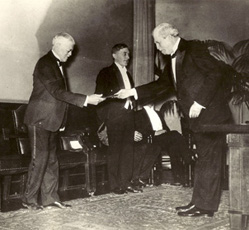
Andrew Ellicott Douglass received the Research Corporation Award “for his studies of tree rings with reference to variations in solar radiation.” Ernst Antevs received the Research Corporation Award “for his studies of sedimentary rocks and clays with reference to variation in clay bands and their relation to variations of solar radiation.” The Research Corporation Award was approved by...Learn more
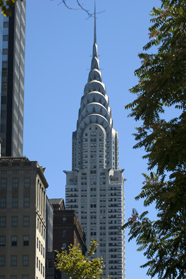
Harold Urey would receive a grant from Research Corporation in 1938 for research on isotopes at Columbia University....Learn more
After several years of managing the electrostatic precipitator patent, Research Corporation staff realized they had developed a skill that could provide another type of help with scientific discovery, and a Patent Management Administration arm of the Foundation was formed. In 1937, the Foundation would sign an agreement with Massachusetts Institute of Technology to manage all of the school’s scientific...Learn more
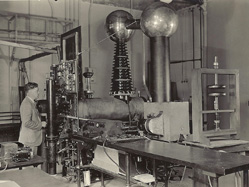
Ernest Orlando Lawrence was born in South Dakota and educated at University of South Dakota, University of Minnesota and Yale. In 1928, he joined the faculty at University of California, Berkeley. Two years later, at the same time he received his first Research Corporation grant, he was made a full professor. Lawrence was the inventor of the cyclotron, an accelerator of subatomic particles. For that...Learn more
Research Corporation funded Kharasch's research at University of Chicago with grants in 1932, 1934, 1936-1937, 1939-1941, 1945-1948 and 1950-1951....Learn more
President Poillon reported he was having a problem finding attorneys who were able to understand and explain Ernest O. Lawrence’s and Robert Van de Graaff’s work in patent applications....Learn more
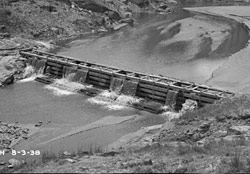
The Great Depression in the United States left the Tennessee Valley (which includes parts of Tennessee, Kentucky, Virginia, North Carolina, Georgia, Alabama and Mississippi) poverty-stricken. In 1933, early in his presidency, Franklin D. Roosevelt proposed establishing the Tennessee Valley Authority as part of the “New Deal,” his plan to build the infrastructure of the country, put people to work,...Learn more
$7,500 was set aside as the Frederick Gardner Cottrell Fund, to be disbursed by Cottrell and the President of Research Corporation "in such manner and in such amounts as they deemed proper, for furthering the purposes for which the Corporation was formed."...Learn more
In 1933, Research Corporation leased land in Southern California with the purpose of growing ephedra, a stimulant that constricts blood vessels, increases heart rate, stimulates the brain, increases metabolism, and expands bronchial tubes. Ephedra is a traditional herbal remedy in Chinese medicine, used to treat asthma and hay fever, as well as the common cold. In cooperation with the Bureau of Plant...Learn more
Funded with a $25,000 grant from RC, Research Associates' purposes were to be the development of inventions. A 1934 entry in Cottrell’s diary noted: “He [Chester G. Gilbert] suggested organizing new separate corporation of younger men to VdG [Van de Graaff], [Ernest] Lawrence, [Merle] Tuve, [Frederick] Brackett with if possible others like [economist and engineer] Stuart Chase and some from business...Learn more
David Sloan would receive a Research Corporation grant in 1941 for research on the resnatron....Learn more
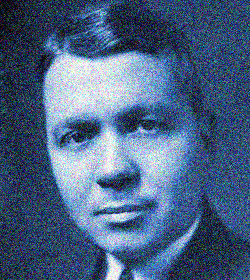
Urey (1893-1981) received the Nobel Prize in chemistry in 1934. He was awarded a Research Corporation grant in 1938 for research on isotopes....Learn more
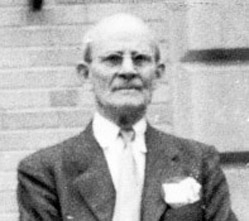
Robert R. Williams Jr. was born in 1886 in Nellore, India, the child of Baptist missionaries. Though his family returned to the United States when he was 10, he never forgot the poverty he had witnessed in India. During World War I, while working in the Philippines, Williams again observed poverty’s heavy toll. While there, he began searching for a cure for beriberi. In Sinhalese, beriberi means...Learn more
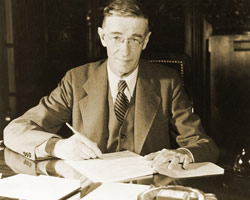
After many years of administering Frederick Cottrell’s patent for the electrostatic precipitator, Research Corporation staff realized they had gained invaluable skills in patent administration. In 1935, the Foundation established an official Invention Administration Program and patent management became a dominant function of the organization. In 1937, Research Corporation and MIT signed an exclusive...Learn more
The Washington Award is given by the Western Society of Engineers. Their website explains that the Society is “a multi-discipline engineering society, whose purpose is to actively encourage the development of engineering leaders and promote engineering excellence and innovation; educate the general public regarding the practice of engineering; recognize the achievements of the member engineers; and...Learn more
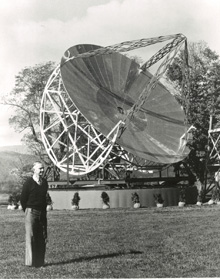
Karl Jansky laid the foundations of radio astronomy in 1932 while working for the Bell Telephone labs. While working on a project to identify sources of interference on shortwave radio links, he became aware of a hiss that would appear and peak once a day in his radio receiver. He noticed that the hiss peaked 4 minutes earlier each day, suggesting that radio waves were being emitted from the center...Learn more
Ernest O. Lawrence received the Research Corporation Award “for his work in nuclear physics.” Percy W. Bridgman received the Research Corporation Award “for his pioneer work on a wide variety of physical phenomena under extremely high pressure.” The Research Corporation Award was approved by the Board at its January 1925 meeting. The Research Corporation Award was not a grant, but was instead...Learn more
Funded with a $25,000 grant from Research Corporation, Research Associates' purposes were to be the development of inventions. A 1934 entry in Cottrell’s diary noted: “He [Chester G. Gilbert] suggested organizing new separate corporation of younger men to VdG [Van de Graaff], [Ernest] Lawrence, [Merle] Tuve, [Frederick] Brackett with if possible others like [economist and engineer] Stuart Chase...Learn more
From the American Institute of Chemists' website: "First presented by the AIC in 1926, the Gold Medal is the AIC’s highest award. It recognizes service to the science of chemistry and to the profession of chemistry or chemical engineering in the United States. Previous winners include Nobel laureates Glenn T. Seaborg and Herbert C. Brown, as well as other renowned researchers and scientists representing...Learn more
Vannever Bush received the Research Corporation Award “for his fruitful and stimulative work with colleagues in the development of powerful and rapid methods of computation.” Hugh S. Taylor received the Award “for his work in the field of catalysis.” The Research Corporation Award was approved by the Board at its January 1925 meeting. The Research Corporation Award was not a grant, but was...Learn more
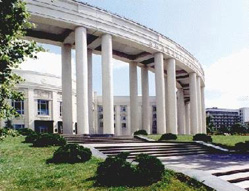
Cottrell and Farrington Daniels began a collaboration in 1939 to find a method to make nitric acid. In a 1948 obituary for Cottrell written by Vannevar Bush and published in “National Academy Biographical Memoirs,” Bush noted: “In 1939, through his advocacy, the University of Wisconsin initiated experiments which might lead to the fixation of nitrogen on an industrial scale. These involved...Learn more
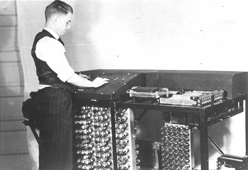
John Vincent Atanasoff was a physicist, professor, government wartime research director and corporate research executive. While teaching at Iowa State College in the late 1930s and early 1940s, Atanasoff taught theoretical physics and conducted research in electronic digital computers. Inspired by the difficulty his students had with calculations, he invented an analog calculator for analyzing surface...Learn more
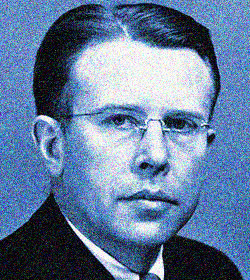
Ernest O. Lawrence (1901-1958) was awarded the Nobel Prize in physics in 1939. Research Corporation supported Lawrence's work for many years with grants in 1930, 1931, 1932, 1934, 1935, 1937, 1938 to secure magnet to build the first large cyclotron, and grants for research in nuclear physics in 1939, 1940, 1941, 1942....Learn more

Robert R. Williams Jr. was born in 1886 in Nellore, India, the child of Baptist missionaries. Though his family returned to the United States when he was ten, he never forgot the poverty he had witnessed in India. During World War I, while working in the Philippines, Williams again observed poverty's heavy toll. While there, he began searching for a cure for beriberi. In Sinhalese, beriberi means...Learn more

In a letter dated March 16, 1940, Vannevar Bush, then-president of the Carnegie Institution of Washington, wrote to Dave Hennen Morris, then-treasurer of Research Corporation, about the building of the big cyclotron: “Coincidences in this world are a strange phenomenon that have formed the basis for many a metaphysical speculation. This morning, when I was dictating a letter to you on an entirely...Learn more
George Beadle (1903-1989) would be awarded the Nobel Prize in physiology or medicine in 1958. Research Corporation’s early support of Beadle's work came in a 1944 grant for research on the induction and detection of biochemical mutations in Neurospora Crassa. Edward L. Tatum (1909-1975) also would receive the Nobel Prize in physiology or medicine in 1958. He was awarded Research Corporation grants...Learn more
Edwin M. McMillan would receive the Research Corporation Award in 1950 as “co-discoverer of Neptunium and Plutonium, for outstanding contributions in the field of nuclear physics.”...Learn more
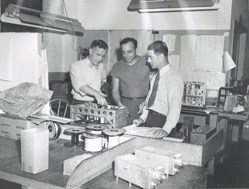
Radar was patented in 1935 by British scientist Sir Robert Watson-Watt, initially perceived as a method of weather forecasting. But during World War II, German Luftwaffe bombing missions prompted the British government to ask the U.S. National Defense Research Committee to develop the application for use in the war. The NRDC had been formed in 1940 to “correlate and support research on mechanisms...Learn more
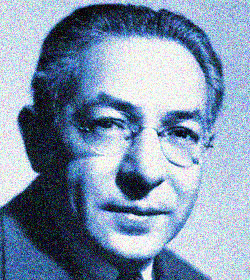
Isidor Rabi (1898-1988) was awarded the Nobel Prize in physics in 1944. He received Research Corporation grants in 1931 for molecular beam research and in 1937, 1938, 1939 and 1940 for research on the magnetic moment of the atom....Learn more
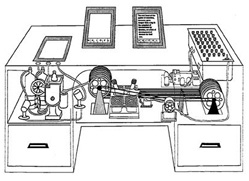
In 1945, Vannevar Bush wrote an article, published in the July issue of “The Atlantic Monthly,” called “As We May Think,” in which Bush extolled the cooperation evident among scientists during World War II. He challenged scientists—and readers—to develop means of making knowledge widely available during peacetime as well. The article looked at then-contemporary means of communication—publications,...Learn more
In 1945, Research Corporation established its first formal grants program, The Frederick Gardner Cottrell Program of Postwar Grants. The grants were established to encourage talented young scientists returning from World War II to return to their college laboratories and classrooms to educate and inspire the next generation of scientists. During the early years of the foundation, grant approval had...Learn more
Melvin Calvin would be awarded the Research Corporation Award “in recognition of his contributions in the field of biochemistry, especially for investigations on the mechanism of photosynthesis” in 1959....Learn more
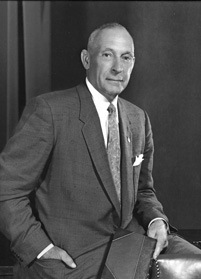
Joseph Warren Barker graduated from MIT in 1916, became an officer in U.S. Army and served overseas. When he retired from the military in 1925 as a major, he became a professor of electrical engineering at MIT. At age 39, he became dean of the faculty of engineering at Columbia. During WWII, he received the Distinguished Civilian Service Award from the U.S. Navy. He was a special assistant to the...Learn more

Radar was patented in 1935 by British scientist Sir Robert Watson-Watt, initially perceived as a method of weather forecasting. But during World War II, German Luftwaffe bombing missions prompted the British government to ask the U.S. National Defense Research Committee to develop the application for use in the war. The NRDC had been formed in 1940 to “correlate and support research on mechanisms...Learn more
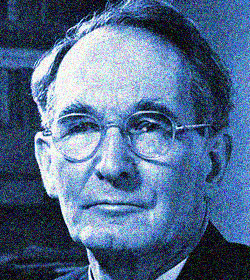
Percy W. Bridgman (1898-1988) was awarded the Nobel Prize in physics in 1946. He would be awarded a Research Corporation grant in 1954 for "An investigation of the properties of matter under pressure with particular reference to the properties of alloys."...Learn more
Research Corporation supported Felix Bloch's work in "Nuclear induction and its application to polarized neutrons" in 1939 and 1945-1948 at Stanford University. Research Corporation funded Edward Purcell's work on "Resonance absorption by nuclear magnetic moments" at Harvard from 1945-1946 and in 1948....Learn more

Robert R. Williams Jr. was born in 1886 in Nellore, India, the child of Baptist missionaries. Though his family returned to the United States when he was 10, he never forgot the poverty he had witnessed in India. During World War I, while working in the Philippines, he again observed poverty’s heavy toll. While there, he began searching for a cure for beriberi. In Sinhalese, beriberi means “I can’t,...Learn more
Lee Du Bridge received the Research Corporation Award “for his scientific contributions in the field of radar and for his outstanding administration of the wartime microwave laboratory.” Merle Tuve received the Research Corporation Award “for his scientific contributions in making possible the proximity fuze (sic) his outstanding administration of the scientific, engineering and production...Learn more
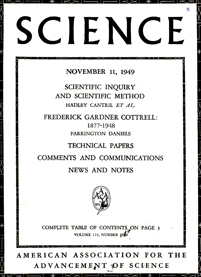
Frederick Gardner Cottrell died on November 16, 1948. His longtime associate, Vannevar Bush, wrote a biographical memoir that was published by the National Academy of Sciences in 1952, in Cottrell’s honor. Bush concluded with these words: “Dr. Cottrell's death … during a meeting of the National Academy of Sciences on his well loved campus of University of California at Berkeley. Appropriately,...Learn more
The Research Corporation Award was approved by the Board at its January 1925 meeting. The Research Corporation Award was not a grant, but was instead designed to recognize outstanding achievements in science by “one who has not undertaken the utilization of his research work for his own pecuniary benefit, whether this has been due to voluntary action on his part, to the circumstances of his employment,...Learn more
Henry Eyring received the Research Corporation Award “for his outstanding contributions to the field of chemical kinetics and rate processes.” He would receive grants from Research Corporation in 1956 and 1957 for the study of "Non-Newtonian viscosity in high polymeric systems" at University of Utah. Bruno Rossi received the Research Corporation Award “for his outstanding contributions in...Learn more
In the years following World War II, scientists were greatly interested in cosmic ray research, the study of particles that bombard the Earth from anywhere beyond its atmosphere. Among those researching these fast-moving particles from space were Bruno Rossi and James Van Allen, both Research Corporation grantees. During the late 1940s and early 1950s, most of the cosmic ray physics in the U.S. was...Learn more

Along the Redwood Highway in northern California, a redwood grove was dedicated in memory of Frederick Gardner Cottrell, founder of Research Corporation. A plaque at the grove, in Prairie Creek Redwoods State Park, acknowledges Cottrell’s contributions to science....Learn more
Edward C. Kendall received the Research Corporation Award “for work in the field of steroid chemistry which culminated in 1948 with the synthesis of cortisone.” Kendall received Research Corporation grants in 1944-1948, 1954 and 1963-1970. The Research Corporation Award was approved by the Board at its January 1925 meeting. The Research Corporation Award was not a grant, but was instead designed...Learn more
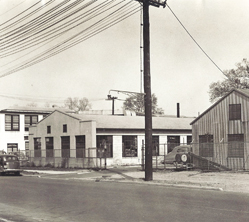
The 1950 tax act changed the status of private foundations. Research Corporation realized it could not continue to operate the precipitator business and maintain its tax-exempt classification. As a result, Research Corporation created Research-Cottrell as a tax-paying stock corporation that was wholly owned by Research Corporation. The business continued building, marketing and selling electrostatic...Learn more
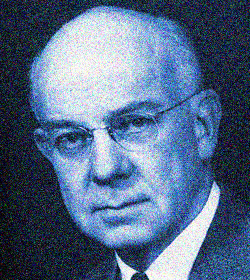
In the 1930s, Edward Kendall, working at the Mayo Clinic in Rochester, Minnesota, isolated six hormones from adrenal glands. He named them for the order in which they were isolated: compounds A through F. Dr. Philip Hench was a rheumatologist at the Mayo Clinic who noted that one of the hormones Kendall had isolated (compound E, which became known as cortisone), when administered to rheumatoid arthritis...Learn more
Edwin McMillan received the Research Corporation Award as “co-discoverer of Neptunium and Plutonium, for outstanding contributions in the field of nuclear physics.” The Research Corporation Award was approved by the Board at its January 1925 meeting. The Research Corporation Award was not a grant, but was instead designed to recognize outstanding achievements in science by “one who has not...Learn more
Willard F. Libby received the Research Corporation Award “for developing the technique and apparatus of determining the ages of archaeological items of vegetable or animal origin by measuring their residual radioactivities.” The Research Corporation Award was approved by the Board at its January 1925 meeting. The Research Corporation Award was not a grant, but was instead designed to recognize...Learn more
Edward Kendall assigned administration of his patent for isolating cortisone to Research Corporation. The Kendall-Hench Fund was established by a $100,000 grant from Merck and Co. and an allotment by Research Corporation of a portion of its income from patent rights in cortisone. The grants were designed to support research in endocrinology; however, the research area proved too narrow and the program...Learn more

Karl Jansky laid the foundations of radio astronomy in 1932 while working for the Bell Telephone labs. While working on a project to identify sources of interference on shortwave radio links, he became aware of a hiss that would appear and peak once a day in his radio receiver. He noticed that the hiss peaked 4 minutes earlier each day, suggesting that radio waves were being emitted from the center...Learn more
Research Corporation supported Djerassi's work on "Reactions of haloketones" at Wayne State University from 1951 until 1955....Learn more
In 1952, “Cottrell: Samaritan of Science,” a biography of Frederick Gardner Cottrell written by Frank Cameron with a foreword by Ernest O. Lawrence, was published. Frank Cameron had previously written publicity materials for the Grace Lines and the Pacific American Steamship Association and had no scientific background, but the biography of Cottrell was intended not as a scientific treatise, but...Learn more
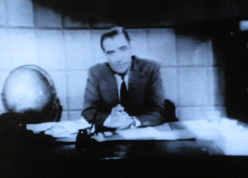
From RC’s 1951-1952 internal annual report: “‘Subversive’ activities There is presently being held a Congressional investigation into the possible use of foundation grants to support subversive activities by grantees or their institutions. Research Corporation filed the requested information but has not been cited to appear. We have never questioned the political nor the “ideological”...Learn more
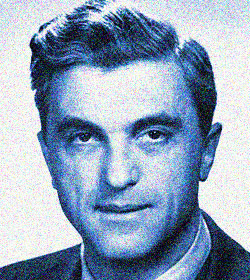
Felix Bloch’s research was funded by an Research Corporation grant in 1939 for "low voltage generator"; additional grants in 1946, 1947 and 1948 for "nuclear induction and its application to polarized neutrons."...Learn more
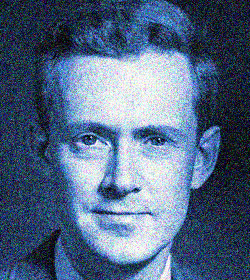
Edward M. Purcell received Research Corporation grants in 1946 and 1948 for research on "resonance absorption by nuclear magnetic moments."...Learn more
Harold S. Black received the Research Corporation Award “specifically for his invention and development of the negative feedback system....Learn more
George E. Uhlenbeck and Samuel A. Goudsmit received Research Corporation Awards “for their discovery of electron spin....Learn more
During World War II, E. Merck and Company in Darmstadt, Germany, had not paid royalties accrued for the production of Vitamin B1, a patent administered by Research Corporation. But in 1953, Merck paid those back royalties. After the war, America's first impulse had been to strip Germany of all means of production, leaving it a rural farming economy. Winston Churchill, however, insisted that post-war...Learn more
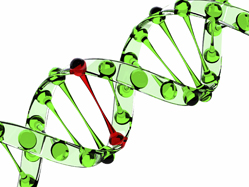
Watson and Crick would receive the Research Corporation Award in 1961....Learn more

The 1950 tax act changed the status of private foundations. Research Corporation realized it could not continue to operate the precipitator business and maintain its tax-exempt classification. As a result, Research Corporation created Research-Cottrell as a tax-paying stock corporation that was wholly owned by Research Corporation. The business continued building, marketing and selling electrostatic...Learn more
Willis E. Lamb Jr. received the 1954 Research Corporation Award in recognition of major contributions in the field of atomic structure and quantum electrodynamics....Learn more
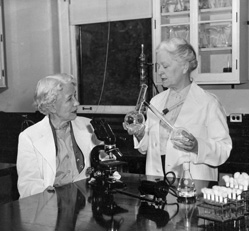
In the late 1940s, Drs. Rachel Brown and Elizabeth Hazen, members of the Division of Laboratories and Research of the New York State Department of Health, conducted research in pursuit of an effective antibiotic. Tests of soil samples, collected from across the country by Dr. Hazen, yielded an organism from a Virginia farm that held promise as an antifungal agent. Within that sample, Rachel Brown...Learn more
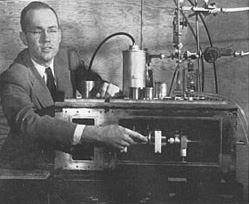
Research Corporation has a longstanding affiliation with Charles Townes. In 1955, after his discovery of the maser principle, Townes assigned management of the invention to Research Corporation. The agreement between Research Corporation and Townes stipulated that the majority of royalty income would be used for the purposes of the foundation. When later asked why he had turned his invention over to...Learn more
Robert B. Woodward received the Research Corporation Award “for his major achievements in chemical synthesis and elucidation of chemical structures.” Woodward (1917-1979) received Research Corporation grants in 1949, 1950, 1951, 1952 and 1953 for experiments on the "synthesis of cortisone" and a grant in 1957 for "the investigation of the structure and synthesis of chlorophyll." He would be awarded...Learn more
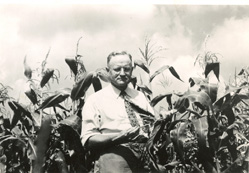
In 1917, Donald F. Jones invented the “double cross” method of hybrid seed production, a process which resulted in extremely high yield hybrids. By 1933 hybrid corn was in commercial production; by 1959 more than 95 percent of total U.S. corn acreage was in hybrid corn. Working with Paul C. Mangelsdorf, Jones conducted pioneering work in development of cytoplasmic male sterility as a genetic...Learn more
Reines would receive a Research Corporation unrestricted venture grant in 1959 and a grant in 1961 to search for neurons and gamma-rays of extra-terrestrial origin. He would be awarded the Nobel Prize in 1995....Learn more
Claude E. Shannon received the 1956 Research Corporation Award “for his pioneering researches on the mathematical foundations of information theory.” Shannon was a mathematician, electronic engineer, and cryptographer. While a graduate student at MIT, Shannon worked with Vannevar Bush on Bush’s analog computer, the differential analyzer....Learn more
The aim of Research Corporation's unrestricted Venture Grants was to identify exceptionally talented younger scientists and make them grants, usually for three years, for use completely at their discretion in advancing their research within their own institutions' policies. Although the program was highly effective, it was terminated in 1961 because other agencies were by then providing more extensive...Learn more
Woodward (1917-1979) received Research Corporation grants in 1949, 1950, 1951, 1952 and 1953 for experiments on the synthesis of cortisone and a grant in 1957 for the investigation of the structure and synthesis of chlorophyll. He would be awarded the Nobel Prize in chemistry in 1965....Learn more
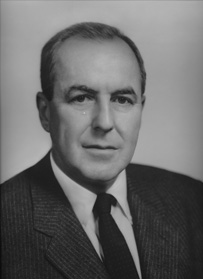
J. William Hinkley trained as an electrical engineer at Yale, then worked for Central Hudson Gas and Electric Corp. from 1927 to 1943. After spending a year on the staff of the Radiation Laboratory of MIT, he became manager of the Research Construction Company, a division of Research Corporation that produced and tested pilot models of radar equipment developed at the Radiation Laboratory during...Learn more

In the late 1940s, Drs. Rachel Brown and Elizabeth Hazen, members of the Division of Laboratories and Research of the New York State Department of Health, conducted research in pursuit of an effective antibiotic. Tests of soil samples, collected from across the country by Dr. Hazen, yielded an organism from a Virginia farm that held promise as an antifungal agent. Within that sample, Rachel Brown...Learn more
Charles Hard Townes received the Research Corporation Award “in recognition of his distinguished researches in microwave spectroscopy which have added to the understanding of the fundamentals of molecular structures.” Research Corporation has a long-standing affiliation with Charles Townes. In 1955, after his discovery of the maser principle, Townes assigned the invention to Research Corporation....Learn more
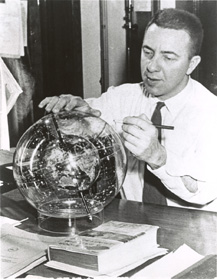
James Van Allen received a 1951 grant from Research Corporation for research at Iowa State University on "Interactions of the primary cosmic radiation with various materials."...Learn more
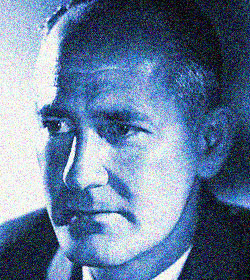
George Beadle (1903-1989) was awarded the Nobel Prize in physiology or medicine in 1958. Research Corporation’s early support of Beadle's work came in a 1944 grant for research on the induction and detection of biochemical mutations in Neurospora Crassa....Learn more
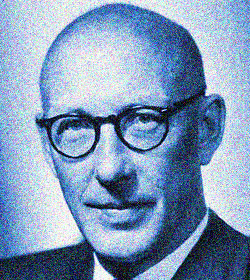
Edward L. Tatum (1909-1975) received the Nobel Prize in physiology or medicine in 1958. He was awarded Research Corporation grants in 1946 and 1947 for research on the uses of isotopes in the study of biosynthesis of amino acids and vitamins by mutant strains of neurospora and E. coli....Learn more
Chien-Shiung Wu received the Research Corporation Award “in recognition of her crucial contributions to the major advances during the last ten years in understanding beta-decay and the weak interactions.” The Research Corporation Award was approved by the Board at its January 1925 meeting. The Research Corporation Award was not a grant, but was instead designed to recognize outstanding achievements...Learn more
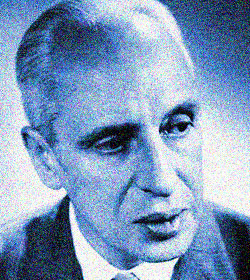
Severo Ochoa (1905-1993) was awarded the Nobel Prize for physiology or medicine in 1959. Ochoa received RC grants in 1941 for research on the intermediary carbohydrate metabolism; in 1944 for research on the respiratory enzymes and the mechanism of the biological oxidation of pyruvic acid; and in 1951 to study enzyme systems involved in biological oxidations and syntheses....Learn more
Melvin Calvin received the Research Corporation Award “in recognition of his contributions in the field of biochemistry, especially for investigations on the mechanism of photosynthesis.” The Research Corporation Award was approved by the Board at its January 1925 meeting. The Research Corporation Award was not a grant, but was instead designed to recognize outstanding achievements in science...Learn more
Rudolf L. Mössbauer received the Research Corporation Award “for his discovery of the recoilless resonance absorption in nuclei, now widely known as the Mössbauer effect....Learn more
Originally established experimentally in the mid-1950s, formalized in 1960, and phased out in 1968, this program was reinstated in 1991. The program was motivated by a conviction that Research Corporation staff had knowledge and expertise that could be used to accelerate the evolution and advancement of carefully selected college science departments. Awards were based on a mutually agreed upon set...Learn more
Robert Hofstadter (1915-1990) was awarded the Nobel Prize in physics in 1961. He received a Research Corporation grant in 1950 for study of nuclear electric charge distribution by performing experiments on the elastic scattering of electrons from nuclei....Learn more
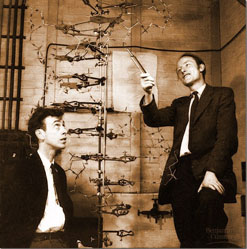
James Watson and Francis Crick received the Research Corporation Award for their discovery of the structure of DNA. They would be awarded the Nobel Prize in physiology or medicine in 1962....Learn more

The career of Robert R. Williams, one of the founders of modern nutrition, can be summarized in his three major accomplishments: chemically identifying and synthesizing thiamin, the first of the B vitamins; fostering the enrichment of bread and cereal grains in the United States and abroad; and providing the funds and the leadership for a program of grants to combat dietary diseases on an international...Learn more
Neil Bartlett was awarded grants by Research Corporation in 1961 for "The preparation and properties of new fluorides" and in 1963 for "The chemistry of rare gases" at University of British Columbia....Learn more
Bernd T. Matthias received the Research Corporation Award “for his discovery of new and unexpected superconductors and ferroelectrics and for his stimulating investigations which are providing important challenges for modern solid state theory....Learn more
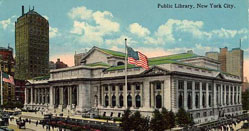
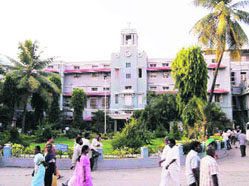
In 1963, RC broke ground for the Williams Laboratories for research and nutrition studies at Christian Medical College and Hospital at Vellore, South India. Funded with a $290,000 grant from Research Corporation, the laboratories were named for Robert and Augusta Williams. Robert Williams was the cofounder (with Robert Waterman) of the Williams-Waterman Fund for the Combat of Dietary Diseases, administered...Learn more
Paul Cohen received the Research Corporation Award “for his revolutionary studies in the foundations of mathematics, culminating in his proof of the independence of the continuum hypothesis and of the axion of choice, initiating a whole series of advances in the field.” Heisuke Hironaka received the Research Corporation Award “for his monumental and profound work, liquidating the classical...Learn more
In 1968, Murray Gell-Mann would win the Research Corporation Award for “contributions of highest significance to the theory of elementary particles and, specifically, for his successful prediction of the Omega Minus particle.”...Learn more
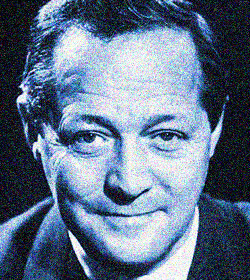
Feodor Lynen (1911-1979) received the Nobel Prize in medicine in 1964. He received a Research Corporation West German Grant in 1954 for research on the biosynthesis of the fatty acids and isoprene derivatives....Learn more
William M. Fairbank received the Research Corporation Award “for his elegant and precise performance of several crucial experiments of fundamental importance in the field of very low temperature physics....Learn more
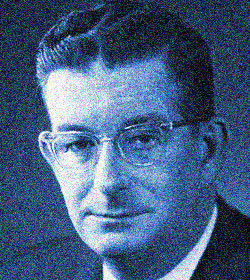
Woodward (1917-1979), who donated his royalty rights to reserpine to Research Corporation in 1956, received Research Corporation grants from 1949 to 1953 for experiments on the synthesis of cortisone; and a grant in 1957 for the investigation of the structure and synthesis of chlorophyll....Learn more
Neil Bartlett received the Research Corporation Award “for his discovery of compounds of noble gases.” He was awarded grants by Research Corporation in 1961 for "The preparation and properties of new fluorides" and in 1963 for "The chemistry of rare gases" at University of British Columbia....Learn more

Research Corporation has a longstanding affiliation with Charles Townes. In 1955, after his discovery of the maser principle, Townes assigned the invention to Research Corporation. The agreement between Research Corporation and Townes stipulated that the majority of royalty income would be used for the purposes of the foundation. When later asked why he had turned his invention over to the foundation,...Learn more
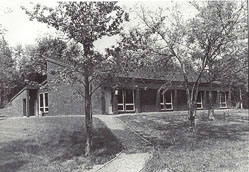
In 1964, Robert Forrest of Baltimore donated 365 acres in Anne Arundel County, Maryland, to the Smithsonian Institution. The land contained a wide variety of habitats for terrestrial, wetland and estuarine field biology and ecology. The Smithsonian preserved the land as a place where scientists, local universities and government agencies could collect research specimens. In 1966, Research Corporation...Learn more
Marshall Nirenberg, chief of the Laboratory of Biochemical Genetics at the National Heart Institute, received the Research Corporation award “for his pioneering work in the discovery of the mechanism through which the code in genetic material determines the proteins synthesized by a cell.” The Research Corporation Award was approved by the Board at its January 1925 meeting. The Research Corporation...Learn more
The Joseph Warren Barker Fellowship in Engineering was established in honor of Research Corporation president Barker to help support promising graduate students in engineering....Learn more

Research-Cottrell was established in 1954 to continue building, marketing and selling electrostatic precipitators. In 1967, the Foundation sold a minority interest (300,000 shares) in the business “primarily to establish a market for the stock in anticipation of possible use of presently unissued shares by Research-Cottrell for further growth and diversification.” The manufacturing company had...Learn more
James W. Cronin and Val L. Fitch received the Research Corporation Award “for their demonstration that the combined symmetry of parity and of charge conjugation is not, as had been previously believed, a universal symmetry law of nature.” The Research Corporation Award was approved by the Board at its January 1925 meeting. The Research Corporation Award was not a grant, but was instead designed...Learn more
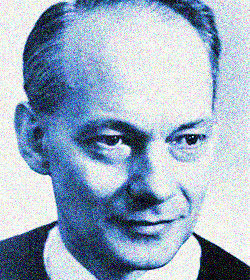
Manfred Eigen (1927- ) received the Nobel Prize in chemistry in 1967. He was awarded a Research Corporation grant in 1954 for research concerning the velocity and mechanism of high speed ionic reactions as part of the Foundation’s West German Grants program....Learn more
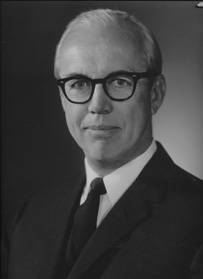
James “Spike” Stacy Coles was born in Mansfield, Pennsylvania, in 1913. His father was the publisher of the local newspaper. Coles earned degrees from Mansfield State Teachers College (1934) and Columbia University (1936; with advanced degrees in 1939 and 1941). Coles, a chemist and oceanographer, taught chemistry at the College of the City of New York (1936-1941); was an assistant professor...Learn more
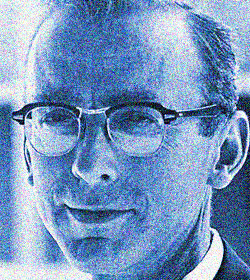
Robert W. Holley (1922-1993) was awarded the Nobel Prize in physiology or medicine in 1968. Holley received a Research Corporation grant in 1958 for research concerning the chemistry of intermediates in protein synthesis....Learn more
Murray Gell-Mann received the Research Corporation Award for “contributions of highest significance to the theory of elementary particles and, specifically, for his successful prediction of the Omega Minus particle....Learn more
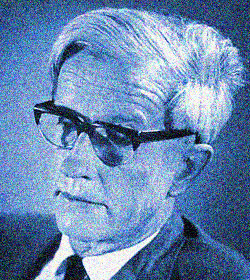
Max Delbrück (1906-1981) was awarded the Nobel Prize in physiology or medicine in 1969. He received a Research Corporation Award in 1958 for the production, characterization and mapping of the phage T2L....Learn more
In the final year of the Research Corporation Award, Brian D. Josephson received the award for “his fundamental work on the theory of electrons in superconducting materials and specifically for his discovery of the macroscopic interference between the quantum fields of two superconductors....Learn more
In 1969, University of Massachusetts designated about 20 acres as the site of the Five College (Amherst, Mt. Holyoke, Smith, University of Massachusetts and Hampshire College) Radio Astronomy Observatory. When completed, the Observatory would house 32 antennas, associated electronics, and small laboratory buildings. The initial telescope was a customized low-frequency antenna to search for pulsars...Learn more
In 1970, Research Corporation’s Board of Directors commissioned a study of the grants efforts from the inception of the Foundation’s first formal grants program in 1946 until 1970. Carl Borgmann, formerly director of the science and engineering program at The Ford Foundation, was selected to evaluate the grants programs. In his report of that evaluation, Borgmann concluded: “Research Corporation...Learn more

In 1917, Donald F. Jones invented the “double cross” method of hybrid seed production, a process which resulted in extremely high yield hybrids. By 1933 hybrid corn was in commercial production; by 1959 more than 95 percent of total U.S. corn acreage was in hybrid corn. Working with Paul C. Mangelsdorf, Jones conducted pioneering work in development of cytoplasmic male sterility as a genetic...Learn more
In 1971, Research Corporation established the Frederick Gardner Cottrell Award for Environmental Quality at the National Academy of Science, to be administered by the Academy. The NAS website describes the award as: “Given for outstanding contributions based in science or technology to improve the quality of the environment or in the control of its pollution by man. Established in 1971 by the Research...Learn more
When they were established by Research Corporation in 1971, the goal of the Cottrell College Science Awards was to "reassert the importance of basic research as a vital component of academic science in the private, predominantly undergraduate colleges."...Learn more
Research Corporation's patents newsletter began publication in Winter 1972. The newsletter highlighted inventions managed by Research Corporation's patents department, and discussed the patents process. Publication ceased with the Fall 1986 issue....Learn more
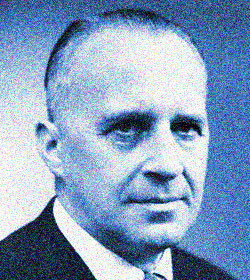
Ernst O. Fischer (1918-2007) received the Nobel Prize in chemistry in 1973. He received a Research Corporation grant in 1961 as part of the Foundation’s West German Grants program....Learn more
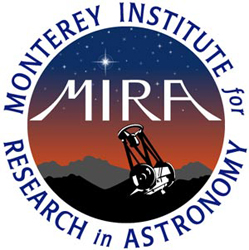
The Monterey Institute for Research in Astronomy was founded in 1972 as a nonprofit independent professional observatory dedicated to research and education in astronomy. It was formed by six graduates of Case Western Reserve University who, seeing limited professional options, decided to create their own future in astronomy by establishing an independent facility to conduct significant but inexpensive...Learn more
In something of a role reversal, Research Corporation’s Patent Program received a grant from the National Science Foundation to conduct a 3-year experiment to identify inventive concepts arising from federally supported research in universities and bring them into public use. Eight institutions that had received government funding in 1972 were participants in the program. The purpose of the program...Learn more
Descendant of a pioneer Oklahoma family, Sam Corry Smith was born in Oklahoma in 1922. He studied chemistry at University of Oklahoma and earned a Ph.D. in biochemistry from University of Wisconsin. From 1951 to 1955 Dr. Smith was assistant and associate professor of biochemistry at University of Oklahoma School of Medicine. Smith joined Research Corporation in 1955 as Secretary of the Williams-Waterman...Learn more
Joseph DeFrees was a pioneer in the design of tank truck equipment, and an inventor with more than 70 patents. In a 1976 letter addressed to then-RC-president James Coles, DeFrees wrote: "For forty two years Frederick G. Cottrell and his Research Corporation have had my undying admiration. Now you are giving me the unique privilege of participating in Cottrell's dream for which I am most grateful."...Learn more
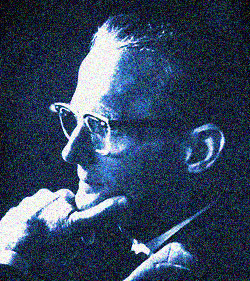
William N. Lipscomb Jr. (1919-2011) was awarded the Nobel Prize in chemistry in 1976. He received a Research Corporation grant in 1959 for determination of the molecular structure of an enzyme, a protease from Tetrahymena pyriformis W, by x-ray diffraction methods....Learn more
The 100th birthday of Frederick Gardner Cottrell, the founder of Research Corporation, was observed at the Cottrell Centennial Symposium at California State College at Stanislaus in 1977. The two-day symposium focused on air pollution and its impact on agriculture. Speakers included politicians, biochemists, environmental scientists, plant pathologists, botanists, meteorologists and then-Research Corporation...Learn more
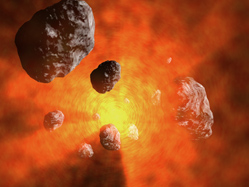
On March 30, 1955, astronomers at Indiana University’s Goethe Link Observatory, near Brooklyn, Indiana, discovered an asteroid. In 1977, in honor of the centennial year of the birth of Research Corporation’s founder Frederick Gardner Cottrell, astronomers at the observatory named the asteroid “Minor Planet (2026) Cottrell.” Grants from RC had funded the purchase of an instrument used in the...Learn more
In 1978, Brian Andreen, Research Corporation Program Officer (and later Vice President), was one of the founding members of the Council on Undergraduate Research (CUR). The initiative originated as a result of a faculty member’s request to Andreen for information on chemistry research being done at private, undergraduate colleges. At the time, little information was available from either government...Learn more
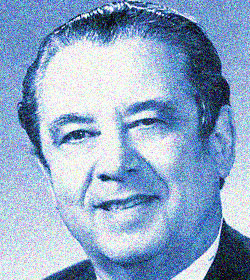
Herbert C. Brown (1912-2004) received the Nobel Prize in chemistry in 1979. He was awarded Research Corporation grants in 1948 and 1949 for research on the effects of structure on the chemistry of addition compounds....Learn more
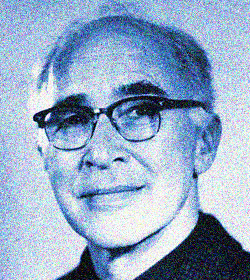
George Wald (1906-1997) was awarded the Nobel Prize in physiology or medicine in 1979. He received Research Corporation grants in 1940, 1942 and 1943 for research on the physiological action of thiamin in neuromuscular systems; and in 1949 for studies involving the conversion of beta-carotene to vitamin A in vitro....Learn more
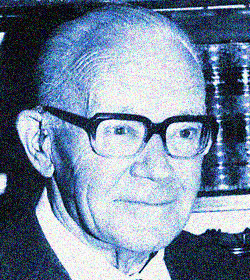
Georg Wittig (1897-1987) was awarded the Nobel Prize in chemistry in 1979. He received a Research Corporation award in 1955 for research on organic anion chemistry....Learn more
Frederick Reines (1918-1998) would be awarded the Nobel Prize in physics in 1995. He received a Research Corporation unrestricted venture grant in 1959 and a grant in 1961 to search for neutrons and gamma-rays of extraterrestrial origin....Learn more
Barnett Rosenberg received funding from Research Corporation for the study of "Photoconductivity and cis-trans isomerism in carotenoids" at New York University in 1959 and 1960....Learn more
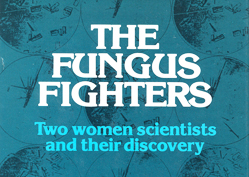
In 1981, Cornell University Press published “The Fungus Fighters,” the story of Rachel Brown and Elizabeth Hazen’s discovery of the first antibiotic useful against human fungal diseases. The two women devoted all royalties from their discovery to the support of new research through Research Corporation’s Brown-Hazen Fund for Medical Mycology. The book, authored by former Research Corporation...Learn more

John Paul Schaefer received his B.S. in chemistry from the Polytechnic Institute in Brooklyn, New York; his Ph.D. in chemistry from University of Illinois, Urbana; and did postdoctoral work at California Institute of Technology. He began his career as an assistant professor of chemistry at University of California, Berkeley, before moving to University of Arizona in 1960. He served 21 years on the...Learn more
In response to the dawning of the computer age, Research Corporation established Research Software, a nonprofit collection center for computer programs for university research, engineering, educational, medical and business purposes. RC proposed to enter into contracts with universities and/or university faculty and staff that had created specialized computer software of scientific and technological...Learn more
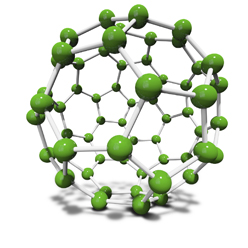
Robert F. Curl Jr. received a Research Corporation grant in 1959 for "Investigations of the microwave spectra of radicals and molecules" at Rice University. Richard E. Smalley received a Research Corporation grant in 1977 for research in "Supersonic molecular beam laser spectroscopy of photoactive molecules" at Rice University....Learn more
The purpose of the American Chemical Society award is to recognize the importance of research with undergraduates. The award honors a chemistry faculty member whose research in an undergraduate setting has achieved wide recognition and contributed significantly to chemistry and to the professional development of undergraduate students. Research Corporation sponsors this award, which is made annually....Learn more
The purpose of the American Physical Society award is to honor a physicist whose research in an undergraduate setting has achieved wide recognition and contributed significantly to physics and who has contributed substantially to the professional development of undergraduate physics students. Research Corporation sponsors this award, which is made annually. Winners include: 2021 Gordon Jones...Learn more
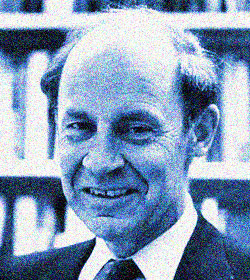
Dudley Herschbach (1932- ) was awarded the Nobel Prize in chemistry in 1986. He would receive a Research Corporation award in 1998 for research on a mechanical means to decelerate gaseous molecules....Learn more
A 2-day symposium entitled "Science, Universities and Society in the 21st Century" was held at University of Arizona in Tucson. The program examined the role of science in contemporary higher education: how scientists should be educated and how people should be educated about science. Talks included: “Commodity Coeducation: Science and the University in Historical Perspective” by David Nobel,...Learn more
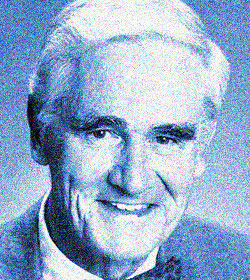
Donald J. Cram (1919-2001) received the Nobel Prize in chemistry in 1987. He was awarded a Research Corporation grant in 1951 for research on macro-ring compounds containing aromatic nuclei as part of the ring system....Learn more
Research Opportunity Awards were established in 1987 and designed for mid-career or senior scientists of demonstrated productivity and creativity who were seeking to explore new areas of experimental research. Each year, the Chair of each Ph.D.-granting astronomy, physics or chemistry department in the U.S. could nominate up to two tenured faculty who were without major research funding. Applications...Learn more
In 1987, Research Corporation spun off its technology development and commercialization activities to create Research Corporation Technologies (RCT). The new company absorbed many of the foundation’s scientists, engineers, lawyers and marketing experts, assumed its patent holdings and took over its agreements with over 300 universities to evaluate, patent and commercialize their inventions. Research...Learn more
By the end of the 1980s, Research Corporation was concerned about the quality of science education in our schools, the qualifications of high school science teachers in their subject matter, and the minimal involvement of college and university faculty with the high school community. These issues inspired a new program, Partners in Science, which funded research opportunities in which high-school...Learn more
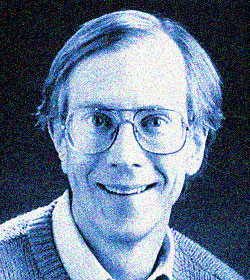
Thomas R. Cech (1947- ) Nobel Prize for chemistry, 1989. He received Research Corporation grants in 1977 and 1978 for photochemical crosslinking of DNA with psoralens....Learn more
As the first effort of its newly established publications program, Research Corporation published “They're Not Dumb, They're Different” by Sheila Tobias in 1990. Her groundbreaking study examined the factors that cause bright students to avoid or drop undergraduate science courses, leading to the shortfall in the number of students who go on to become scientists. One of the major problems that...Learn more
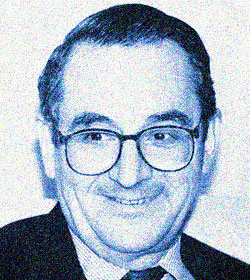
Elias J. Corey (1928- ) received the Nobel Prize in chemistry in 1990. He was awarded Research Corporation grants in 1958 and 1959 for the synthesis of electronically unstable organic structures protected by large substituents....Learn more
Originally established experimentally in the mid-1950s, formalized in 1960, and phased out in 1968, this program was reinstated in 1991. The program was motivated by a conviction that Research Corporation staff had knowledge and expertise that could be used to accelerate the evolution and advancement of carefully selected college science departments. Awards were based on a mutually agreed upon set...Learn more

Robert R. Williams Jr. was born in 1886 in Nellore, India, the child of Baptist missionaries. Though his family returned to the United States when he was 10, he never forgot the poverty he had witnessed in India. During World War I, while working in the Philippines, he again observed poverty’s heavy toll. While there, he began searching for a cure for beriberi. In Sinhalese, beriberi means “I can’t,...Learn more
After a decade of study and innovation aimed at correcting serious flaws in undergraduate science, serious problems persisted. “Revitalizing Undergraduate Science: Why Some Things Work and Most Don't” examined why most reforms of college science have been incomplete and short-lived. The book was written by Sheila Tobias and published by Research Corporation....Learn more
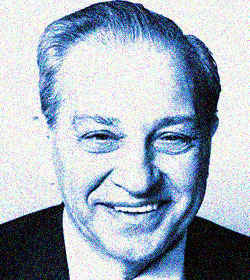
Ruldolph A. Marcus (1923- ) was awarded the Nobel Prize in chemistry in 1992. He received Research Corporation grants in 1954 and 1956 for studies of the behavior of dicarboxylate ions....Learn more
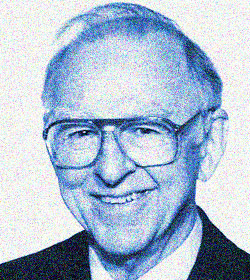
Edwin G. Krebs (1918-2009) received the Nobel Prize in physiology or medicine in 1992. He was awarded Research Corporation grants in 1958 and 1959 for immunochemical studies on glycolytic enzymes....Learn more
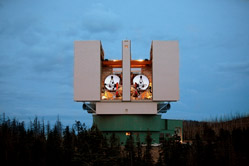
The Large Binocular Telescope, built atop Mt. Graham in southeastern Arizona, consists of two 8.4-meter-diameter mirrors, providing resolution ten times that of the Hubble Space Telescope, making it the world’s most powerful telescope for research in optical and infrared astronomy. In 1992, a consortium was formed to oversee the design, construction and operation of the Large Binocular Telescope....Learn more
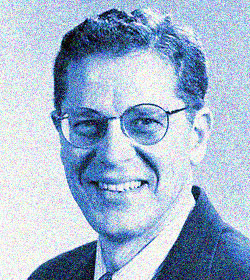
Joseph H. Taylor Jr. (1941-) received the Nobel Prize in physics in 1993. He was awarded a Research Corporation grant in 1970 for observations of the temporal variation of pulsars....Learn more
In 1994, Research Corporation initiated the Cottrell Scholar Award for early career faculty who have demonstrated the ability to mount a strong research program, and a commitment to pursuing a career as a teacher-scholar. The award is open to astronomy, biochemistry, biophysics, chemistry, or physics faculty (but not in a school of medicine or engineering) in the third year of tenure track appointments...Learn more

In the late 1940s, Drs. Rachel Brown and Elizabeth Hazen, members of the Division of Laboratories and Research of the New York State Department of Health, conducted research in pursuit of an effective antibiotic. Tests of soil samples, collected from across the country by Dr. Hazen, yielded an organism from a Virginia farm that held promise as an antifungal agent. Within that sample, Rachel Brown...Learn more
The early 1990s found many of America's best minds idled by changing national priorities, with recent science graduates having difficulty finding employment. In 1992 and 1993, authors Sheila Tobias, Daryl Chubin and Kevin Aylesworth surveyed hundreds of unsuccessful job applicants, in cooperation with six different departments of physics and chemistry. “Science as a Career: Perceptions and Realities”...Learn more
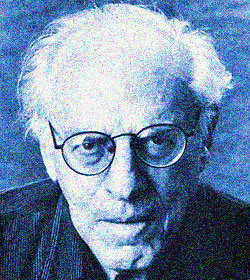
Frederick Reines (1918-1998) was awarded the Nobel Prize in physics in 1995. He received a Research Corporation unrestricted venture grant in 1959 and a grant in 1961 to search for neutrons and gamma-rays of extraterrestrial origin....Learn more
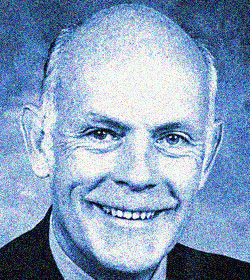
Richard E. Smalley (1943-2005) was awarded the Nobel Prize in chemistry in 1996. He received Research Corporation grants in 1976 and 1977 to investigate supersonic molecular beam laser spectroscopy of photoactive molecules at Rice University....Learn more
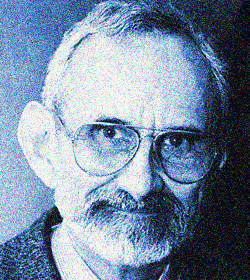
Robert F. Curl Jr. (1933- ) received the Nobel Prize in chemistry in 1996. He was awarded a Research Corporation grant in 1958 for investigations of the microwave spectra of radicals and molecules at Rice University....Learn more
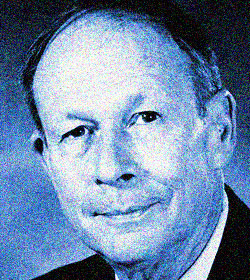
Robert C. Richardson (1937- ) received the Nobel Prize in physics in 1996. He was awarded Research Corporation grants in 1972 and 1973 for investigation of possible superfluid properties of liquid helium-3....Learn more
Research Corporation started the Research Innovation Awards in 1997 to encourage research that transcends the ordinary. First-year faculty in their first tenure-eligible appointment in chemistry, physics and astronomy departments at public or private institutions were eligible for RIA awards. RIA proposals were judged on scientific significance, potential impact and feasibility, but most importantly...Learn more
In 1998, Research Corporation, with study cosponsors Camille and Henry Dreyfus Foundation, William Keck Foundation, M.J. Murdock Charitable Trust and the Robert A. Welch Foundation, surveyed 136 institutions to examine the environment of astronomy, biosciences, chemistry, geosciences and physics education at predominantly undergraduate institutions (PUIs). The study looked at the role of research...Learn more
By the end of the 1980s, Research Corporation was concerned about the quality of science education in our schools, the qualifications of high school science teachers in their subject matter, and the minimal involvement of college and university faculty with the high school community. These issues inspired a new program, Partners in Science, which funded research opportunities in which high-school...Learn more
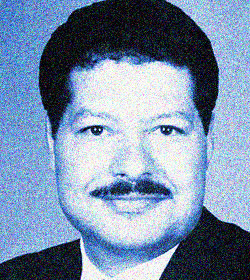
Ahmed H. Zewail (1946- ) was awarded the Nobel Prize in chemistry in 1999. He received a Research Corporation grant in 1976 for an investigation of energy transport in high-dimensional solids....Learn more
In 1998, Research Corporation, with study cosponsors Camille and Henry Dreyfus Foundation, William Keck Foundation, M.J. Murdock Charitable Trust and the Robert A. Welch Foundation, surveyed 136 institutions to examine the environment of astronomy, biosciences, chemistry, geosciences and physics education at predominantly undergraduate institutions (PUIs). The study looked at the role of research...Learn more
“Bringing the Excitement of Science to the Classroom” is a collection of firsthand experiences from Research Corporation’s highly successful Partners in Science program. The ten-year experiment in science allowed high school teachers to have two summers of research experience with a college or university mentor. The book features reviews by teachers and mentors in the program. A how-to section...Learn more
In 2000, the first “Earth and Sky” radio program aired on Public Radio. Research Corporation funded the initial series, helped with development of topics and furnished background information on many of the milestones that received early Foundation support. The program ended in 2013....Learn more
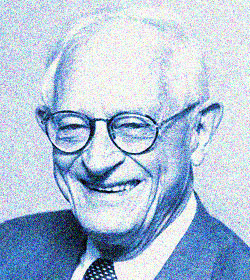
Alan MacDiarmid (1927-2007) received the Nobel Prize in chemistry in 2000. He was awarded Research Corporation grants in 1956, 1957 and 1959 for investigation of silico-ethyl compounds....Learn more
In 1998, Research Corporation, with study cosponsors Camille and Henry Dreyfus Foundation, William Keck Foundation, M.J. Murdock Charitable Trust and the Robert A. Welch Foundation, surveyed 136 institutions to examine the environment of astronomy, biosciences, chemistry, geosciences and physics education at predominantly undergraduate institutions (PUIs). The study looked at the role of research...Learn more
In 1998, Research Corporation, with study cosponsors Camille and Henry Dreyfus Foundation, William Keck Foundation, M.J. Murdock Charitable Trust and the Robert A. Welch Foundation, surveyed 136 institutions to examine the environment of astronomy, biosciences, chemistry, geosciences and physics education at predominantly undergraduate institutions (PUIs). The study looked at the role of research...Learn more
Seaphire was a start-up company based in Phoenix, Arizona. Their focus was the development of an “integrated seawater farm,” dedicated to the environmentally sound production of shrimp, tilapia and other products. The company hoped to solve problems related to declining water tables, loss of arable land, failing fisheries and decreasing biodiversity, plus bolster the economy of Eritrea, Africa,...Learn more
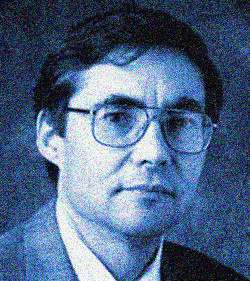
Carl E. Wieman (1951- ) was awarded the Nobel Prize in physics in 2001. He received a Research Corporation grant in 1981 for a precision test of the Weinberg-Salaam theory of weak and electromagnetic interactions....Learn more

Karl B. Sharpless (1941- ) received the Nobel Prize in chemistry in 2001. He was awarded a Research Corporation grant in 1971 to study the chemistry of cis-dioxo transition metal species and its relevance to the action of mixed function oxygenases....Learn more
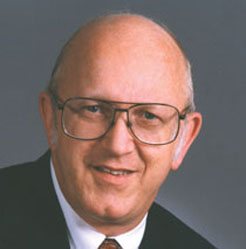
Michael P. Doyle received a Bachelor's degree in Chemistry from College of St. Thomas, St. Paul, Minnesota in 1964; and a Ph.D. in Organic Chemistry from Iowa State University, Ames, Iowa (where he was an NIH Fellow with W. Trahanovsky) in 1968. Following a postdoctoral position at University of Illinois at Chicago Circle, Doyle joined the faculty at Hope College in 1968. In 1984, he moved to Trinity...Learn more
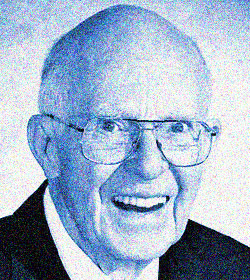
Raymond Davis Jr. (1914-2006) was awarded the Nobel Prize in physics in 2002. He received a Research Corporation grant in 1948 for studies on the adsorption of gases by solids....Learn more

Written by Thomas Cornell of Rochester Institute of Technology, "Establishing Research Corporation: A Case Study of Patents, Philanthropy, and Organized Research in Early Twentieth-century America," analyzes both the engineering and philanthropic efforts of Research Corporation's formative years. Photo of first electrostatic precipitator....Learn more

The Large Binocular Telescope, built atop Mt. Graham in southeastern Arizona, consists of two 8.4-meter-diameter mirrors, providing resolution ten times that of the Hubble Space Telescope, making it the world’s most powerful telescope for research in optical and infrared astronomy. In 1992, a consortium was formed to oversee the design, construction and operation of the Large Binocular Telescope....Learn more
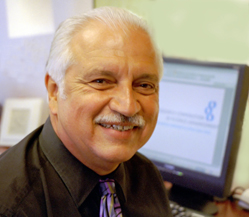
Jim Gentile became president of Research Corporation in January 2005 after nearly 30 years at Hope College, where he held an endowed chair in biology and served as Dean for the Natural Sciences. He received numerous national and international awards over the years, most recently the Alexander Hollaender Research Excellence Award from the Environmental Mutagen Society and the Cancer Research Medallion...Learn more
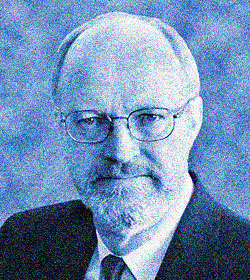
Robert H. Grubbs (1942- ) received Research Corporation awards in 1969 for studies on multisite organometallic reactions; and from 1988 until 1990 to study computational approaches to polymer structures....Learn more
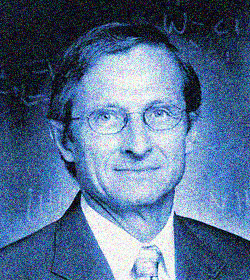
Richard R. Schrock (1945- ) received a Research Corporation grant in 1975 for the study of reactions of transition metal complexes with ylides....Learn more

From the LSST website: “The 8.4-meter LSST will survey the entire visible sky deeply in multiple colors every week with its three-billion pixel digital camera, probing the mysteries of Dark Matter and Dark Energy, and opening a movie-like window on objects that change or move rapidly: exploding supernovae, potentially hazardous near-Earth asteroids, and distant Kuiper Belt Objects. "Plans for...Learn more
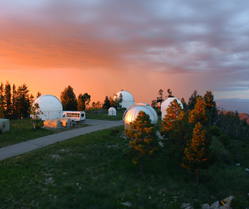
The Mt. Lemmon SkyCenter is a science learning facility located at a “sky island” observing site at the 9,157-foot summit of Mt. Lemmon, north of Tucson, Arizona. The Center, which operates as part of University of Arizona’s public outreach efforts, offers educational adventures to the public, including SkyNights observation opportunities with the Center’s 32-inch Schulman telescope, science...Learn more
Web-based online software allowed the electronic transmission of preliminary requests, nominations, proposals and peer reviews....Learn more
The Arts and Entertainment Television Networks show “Modern Marvels” broadcast an episode on the History Channel that looked at “Sticky Stuff” and featured Research Corporation's founder, Frederick Gardner Cottrell, and his invention of the electrostatic precipitator....Learn more
When founder Frederick Gardner Cottrell and the original Board of Directors chose the name “Research Corporation” in 1912, the term “foundation” was not in common use. At that time, the only other foundation in existence in America was the Carnegie Corporation of New York, which had been established by Andrew Carnegie in 1911. After many years of confusion about what Research Corporation...Learn more

For many years, RCSA’s logo featured three gear sprockets, representing academia, patent management and invention. By 2008, the Foundation was no longer involved in either patent management or invention and it was deemed time to redesign its logo. The new logo reflects the Foundation’s contemporary emphasis on science and education. Depending on their areas of expertise, scientists may perceive...Learn more
Research Opportunity Awards were established in 1987 and designed for mid-career or senior scientists of demonstrated productivity and creativity who were seeking to explore new areas of experimental research. Each year, the Chair of each Ph.D.-granting astronomy, physics or chemistry department in the U.S. could nominate up to two tenured faculty who were without major research funding. Applications...Learn more
The Presidential Advisory Committee convened to discuss proposed changes for the Foundation. Members of the committee included: Vicki Chandler, chief program officer, science, for the Gordon and Betty Moore Foundation. She is also University of Arizona's Carl E. and Patricia Weiler Endowed Chair for Excellence in Agriculture and Life Sciences, a regents' professor in the departments of plant sciences...Learn more
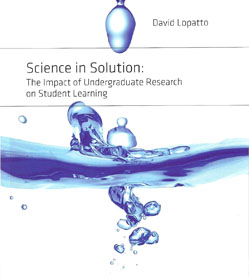
In “Science in Solution: The Impact of Undergraduate Research on Student Learning,” author David Lopatto discusses the importance of exposing students to “thinking and working like scientists,” which science and policy experts have identified as a competitive need for the U.S. He examines the effectiveness of engaging students in active research early in their academic careers, instead of waiting...Learn more
Scialog seeks to accelerate the work of 21st-century transformational science through funding research, intensive dialogue and community building. Conceived as a research grant program emphasizing annual meetings and the opportunity, encouragement and expectation to form cross-disciplinary teams, the Scialog process is guided by a panel of nationally recognized scientists. Scialog is intended to:...Learn more
When they were established by Research Corporation in 1971, the goal of the Cottrell College Science Awards was to "reassert the importance of basic research as a vital component of academic science in the private, predominantly undergraduate colleges." The Multi-Investigator Cottrell College Science Award (MI-CCSA) program was a new initiative aimed at helping start sustainable, collaborative programs...Learn more
By the end of the 1980s, Research Corporation was concerned about the quality of science education in our schools, the qualifications of high school science teachers in their subject matter, and the minimal involvement of college and university faculty with the high school community. These issues inspired a new program, Partners in Science, which funded research opportunities in which high-school science...Learn more
In 2010, Research Corporation for Science Advancement funded the research of noted education writer Sheila Tobias and veteran science teacher Anne Baffert. That project produced “Science Teaching as a Profession: Why It Isn't. How It Could Be” which was published by the National Science Teachers Association. Based upon communications with nearly 500 science teachers across the United States over...Learn more
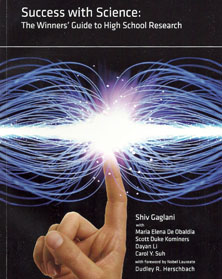
“Success with Science: The Winners’ Guide to High School Research” was published by Research Corporation for Science Advancement in 2010. The book was written by Harvard University science students to encourage their high-school colleagues to participate in the world of American science competitions. Authors Shiv Gaglani, Maria Elena De Obaldia, Duke Kominers, Dayan Li and Carol Yoon Joo Suh...Learn more
The first Scialog Awards were made in 2010 to ten investigators. The October 2010 Scialog conference was held at Biosphere2 near Tucson, Arizona. The meeting focused on solar energy conversion. It was co-sponsored by the National Science Foundation, with in-kind contributions from University of Arizona. "Scialog: Solar Energy Conversion" brought together 50 newly tenured professors doing high-risk/high-reward...Learn more
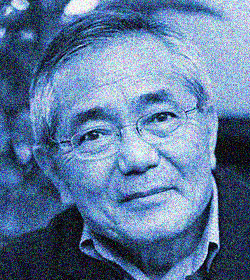
Ei-ichi Negishi (1935- ) was awarded the Nobel Prize in chemistry in 2010. He received a Research Corporation grant in 1973 for the study of the chemistry of small ring organoboron compounds....Learn more
Roger Angel, founder and Director of University of Arizona’s Steward Observatory Mirror Laboratory and Regents' Professor of Astronomy and Optical Sciences, led a technological renaissance in telescope mirror making. Angel pioneered ways to find and study Earth-like planets of other stars. Angel received grants from Research Corporation in 1970 for “the search for magnetic fields in white dwarf...Learn more

RCSA celebrated its centennial with a gala at the National Air and Space Museum in Washington, D.C....Learn more
RCSA co-sponsored, with the American Chemical Society, a congressional briefing on “STEM Education for an Innovative Workforce....Learn more
RCSA joined with Discover magazine and the New York Academy of Sciences to sponsor a discussion about world-changing research, “Crazy or Brilliant: Betting on High-Risk, High-Reward Science....Learn more
In 2013, RCSA took a major step in partnering with five other philanthropies — Alfred P. Sloan Foundation, Gordon and Betty Moore Foundation, Howard Hughes Medical Institutes, Kavli Foundation and the Simons Foundation — to form the Science Philanthropy Alliance....Learn more
Former RCSA Vice President Jack Pladziewicz was named interim president and CEO of RCSA effective January 14, 2013. He retired in March 2014....Learn more
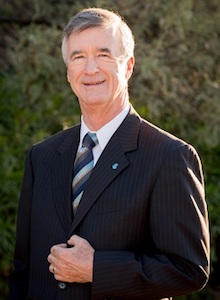
Robert M. Shelton became president and CEO in March 2014, succeeding retiring interim president Jack Pladziewicz. Shelton had served as the 19th president of the University of Arizona, from 2006 to 2011....Learn more
RCSA made a gift of $1.5 million to the National Academy of Sciences to establish the Award for Scientific Discovery in honor of RCSA past president John P. Schaefer. This new $100,000 prize will be given biennially to recognize an accomplishment or discovery in basic research within the past five years....Learn more
The Cottrell Scholar program, for the first time since its inception in 1994, incorporated early career faculty from primarily undergraduate institutions with their colleagues from research intensive institutions....Learn more
RCSA created a new portfolio of competitive Cottrell Plus Awards offering opportunities to advance the skills, knowledge, and experience of post-tenure Cottrell Scholars throughout their careers. Cottrell Plus Awards include STAR (Science Teaching and Research), SEED (Singular Exceptional Endeavors of Discovery), FRED (Frontiers in Research Excellence and Discovery), and IMPACT....Learn more
RCSA entered into a collaboration with the German-American Fulbright Commission to create a Cottrell Scholar-like program for Germany. Fulbright-Cottrell Scholars participate in Cottrell Scholar Conferences and collaborate on team projects....Learn more
Sponsored by RCSA and the Gordon and Betty Moore Foundation, with additional support from the Simons Foundation and the National Institutes of Health National Cancer Institute, it held conferences in 2015, 2016 and 2017. The focus of this Scialog was for early career theorists and experimentalists from physics, biology and closely related disciplines to come together to develop a stronger quantitative...Learn more
Sponsored by RCSA and the Heising-Simons Foundation, with additional support from the Kavli Foundation, it held meetings in 2015, 2016, 2018 and 2019. The initiative brought together early career theorists, observers and computational scientists to identify and pursue new research to accelerate our understanding of stars and their life-cycles, as well as to promote innovative projects based on new...Learn more
RCSA named Carlos Meriles, physics, CCNY, the first recipient of a $250,000 Frontiers in Research Excellence and Discovery (FRED) Award, the largest of the new awards within the Cottrell Scholar program. His award funded intensive study of the spin and electrical behavior of an impurity in the otherwise uniform crystal-lattice structure of diamond. Further recipients of the FRED Award were: 2017 Sara...Learn more
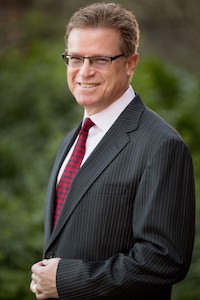
CFO Daniel Gasch served as interim president following the resignation of Robert M. Shelton in February 2017....Learn more

Daniel Linzer became RCSA president and CEO on October 1, 2017, after serving on the faculty and in the administration of Northwestern University. He had been provost of Northwestern University since 2007....Learn more
Sponsored by RCSA and the Alfred P. Sloan Foundation, with additional support from Lyda Hill Philanthropies, it held meetings in 2017, 2018 and 2019. The initiative aimed to catalyze theorists, computational scientists and experimentalists across multiple disciplines to develop new and innovative projects to accelerate fundamental science driving advances in energy storage....Learn more
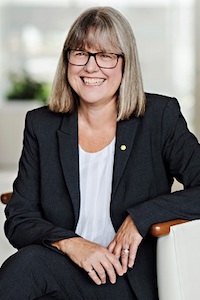
Donna Strickland became the first Cottrell Scholar awarded the Nobel Prize. Strickland’s 2000 Cottrell Scholar Award was for the study of chirped optical dissociation of molecules....Learn more
Sponsored by RCSA and the Gordon and Betty Moore Foundation, the initiative seeks to spark collaborative projects that could lead to a deeper understanding of chemical machinery and reactions in the intact cell....Learn more
The first Cottrell Scholar Regional Meeting, held April 17 at the University of Illinois, Urbana-Champaign, drew more than 15 Scholars along with members of their research groups....Learn more
The 25th Annual Cottrell Scholar Conference in Tucson featured an International Science Slam competition organized by the German-American Fulbright Commission....Learn more

RCSA responded quickly to create three emergency initiatives in response to the COVID-19 pandemic: the COVID-19 Initiative, Cottrell Fellowships, and Cottrell Instrumentation Supplements. The COVID-19 Initiative supported cutting-edge research into the detection and mitigation of the current and future epidemics. Cottrell Fellowships supported the work of postdoctoral fellows whose plans to...Learn more
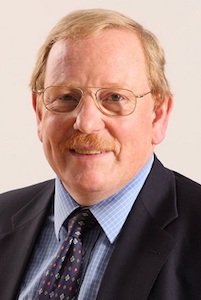
Reinhard Genzel was part of the German collaboration that helped launch the RCSA-supported Large Binocular Telescope (LBT) on Mount Graham in Arizona, as well as a 1982 RCSA grant recipient for a far-infrared and submillimeter laser for astronomical spectroscopy....Learn more
Sponsored by RCSA and the Alfred P. Sloan Foundation, the initiative is designed to challenge early-career scientists to explore together how to advance fundamental science in the design of novel approaches for rapidly removing and utilizing or sequestering greenhouse gases....Learn more

More than 50 Fellows from multiple disciplines and institutions across the U.S. and Canada gathered virtually April 22-23, 2021 for the inaugural meeting of Scialog: Microbiome, Neurobiology and Disease, a three-year initiative to brainstorm creative, new research ideas that could advance our understanding of the gut microbiome and its relationship to the brain and neurobiology. The initiative is sponsored...Learn more

More than 50 early career chemists, physicists, biologists, bioengineers and medical imaging specialists gathered May 20-21, 2021, to launch Scialog: Advancing BioImaging, a three-year initiative aiming to accelerate the development of the next generation of imaging technologies. It is sponsored by RCSA, the Chan Zuckerberg Initiative, and the Frederick Gardner Cottrell Foundation, with additional...Learn more

What makes a world habitable? How can we tell if certain molecules are signs of life? These questions and more were discussed at the first meeting of Scialog: Signatures of Life in the Universe, held virtually June 10-11, 2021. The initiative is cosponsored by the Heising-Simons Foundation, with additional support from the Kavli Foundation and NASA....Learn more

RCSA launched its newest Scialog initiative, Mitigating Zoonotic Threats, with a virtual meeting September 30-October 1, 2021. In the planning stages even before the SARS CoV 2 epidemic began, the initiative is sponsored by RCSA and two U.S. Department of Agriculture agencies working together at the National Bio and Agro-Defense Facility — the Animal and Plant Health Inspection Service (APHIS) and...Learn more
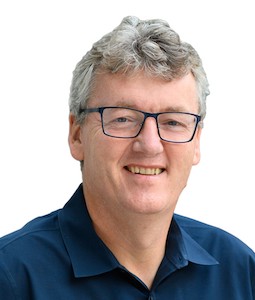
David W.C. MacMillan, Chemistry, Princeton University, became the second Cottrell Scholar and 42nd RCSA-supported scientist to be awarded a Nobel Prize. He shares the award in chemistry with Benjamin List, Max-Planck-Institut für Kohlenforschung, for the development of asymmetric organocatalysis, a precise new tool that made a great impact on pharmaceutical research and has made chemistry greener....Learn more
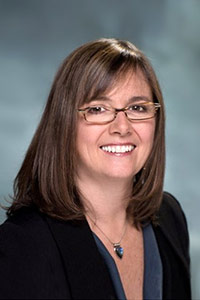
RCSA made a gift in February 2022 to establish the Council on Undergraduate Research’s new Silvia Ronco Innovative Mentor Award. The award, in honor of CUR past president and RCSA Senior Program Director Silvia Ronco, recognizes a tenure-track faculty member within 10 years of their first faculty appointment who demonstrates success in chemical sciences and whose mentoring practices have supported...Learn more
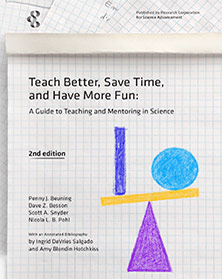
Cottrell Scholars who authored “Teach Better, Save Time, and Have More Fun: A Guide to Teaching and Mentoring in Science” in 2014 to help early career faculty become effective educators without “reinventing the wheel” wrote an expanded second edition with a particular focus on effective online and hybrid teaching, student and faculty mentoring, graduate student support, and inclusive...Learn more
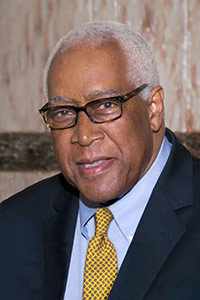
RCSA launched a new award to recognize and welcome outstanding senior scientists with diverse perspectives and backgrounds into the Cottrell Scholar community: the Robert Holland Jr. Award for Research Excellence and Contributions to Diversity, Equity, and Inclusion. The award honors the legacy of the late Robert Holland Jr., an engineer and corporate executive who served as a member of RCSA’s Board...Learn more
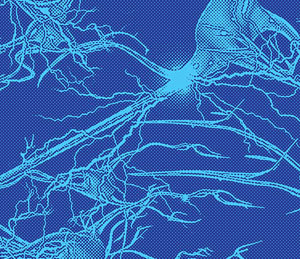
More than 50 early career scientists from multiple disciplines gathered October 13-16, 2022, in Tucson, to launch Scialog: Molecular Basis of Cognition, a new initiative that seeks to advance understanding of the molecular processes that underlie memory and cognition. The initiative is co-sponsored by RCSA, the Frederick Gardner Cottrell Foundation and the Canadian Institute for Advanced Research (CIFAR)...Learn more
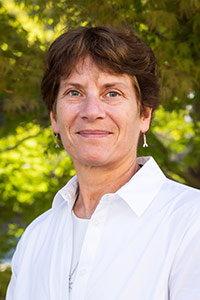
Two RCSA-supported scientists were awarded the 2022 Nobel Prize in Chemistry. Carolyn R. Bertozzi, Morten Meldal and K. Barry Sharpless share the award "for the development of click chemistry and bioorthogonal chemistry." Bertozzi received an RCSA Research in Innovation Award in 1997 to develop new strategies for anti-tumor therapy and diagnosis. Sharpless, who is being awarded his second Nobel Prize...Learn more